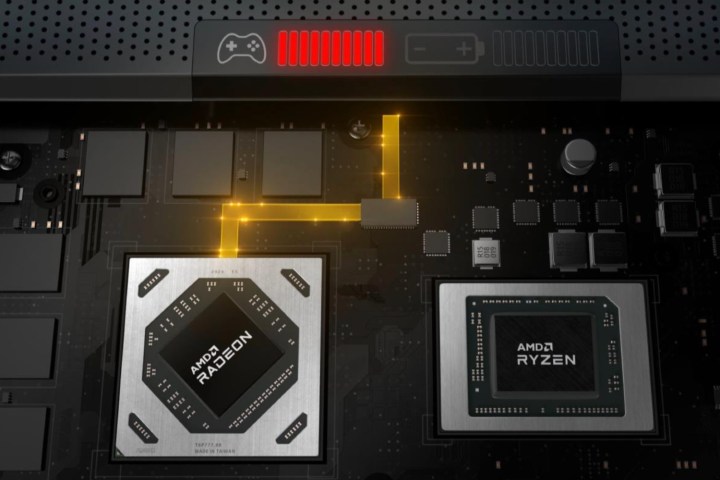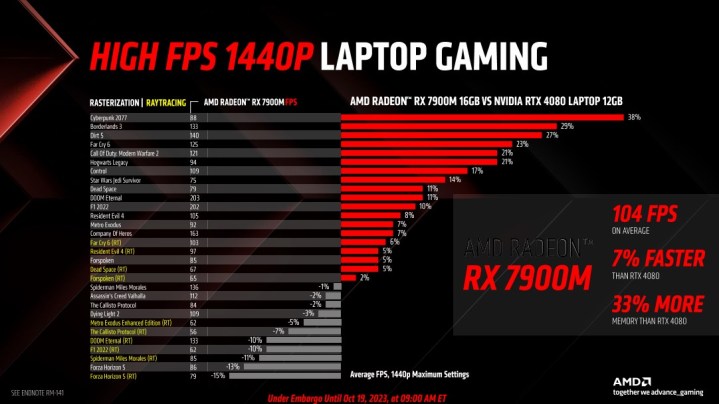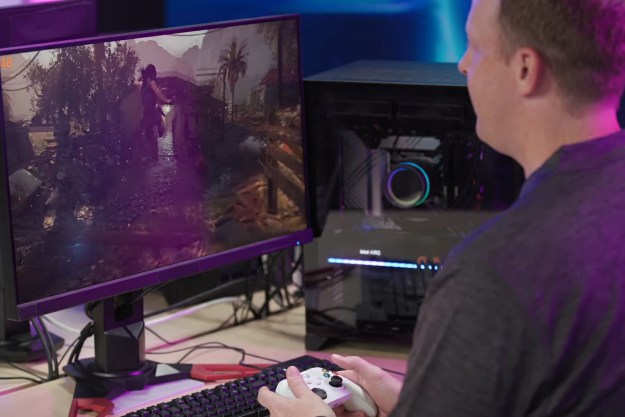
AMD hasn’t done much with its laptop GPUs this generation, but that’s changing. The company revealed the new Radeon RX 7900M, which is a mobile GPU that’s squarely targeting the performance of Nvidia’s RTX 4080.
Although AMD announced laptop GPUs at the beginning of the year, we haven’t seen them in very many laptops. It appears that’s changing. The RX 7900M is arriving first in the Alienware m18 laptop alongside AMD’s Ryzen 9 7945HX processor. AMD hasn’t said if we’ll see more laptops with the GPU yet, but it looks like we should only expect it high-end, desktop replacement-class machines.
For performance, AMD says that the RX 7900M is built for 1440p gaming, and that it’s 7% faster than the RTX 4080 on average. In real numbers, AMD says it achieved 104 frames per second (fps) on average across 30 games.

Critically, that average includes ray tracing benchmarks. AMD usually shies away from ray tracing, mainly due to the fact that Nvidia dominates there. However, AMD is claiming a lead of anywhere from 2% to 6% in a handful of games including Fry Cry 6, Resident Evil 4, Dead Space, and Forspoken. AMD suffers in some
There’s something a little fishy with these benchmarks, though. AMD’s slides note that the RTX 4080 machine was an unnamed Aorus laptop with half the RAM and an Intel Core i7-13700H. That’s not exactly a fair battle based on specs alone. It seems AMD tested against the Aorus 17H, which is smaller than the Alienware m18 and doesn’t feature the extra 25-watt boost to Total Graphics Power (TGP) that the RTX 4080 is capable of. Based on all that, the 7% margin could be much thinner in a true one-to-one battle.

That seems like the case given the amount of power the RX 7900M can draw. As usual, laptop brands are free to adjust the TGP to meet their form factor and design goals, but AMD says the card can reach up to 180W of power. Presumably, the Alienware m18 is drawing the full power the card is capable of.
For other specs, the RX 7900M has access to 16GB of GDDR6 memory, 72 RDNA 3 compute units and

As for the Alienware m18, it’s an AMD Advantage laptop, meaning it sports both an AMD CPU and GPU, and it has access to AMD Smart technologies like Smart Access Memory and SmartShift Max. In addition to the AMD components, the laptop comes with up to 64GB of DDR5-4800 memory and up to 8.5TB of NVMe storage. You can configure it with either a 2,560 x 1,600 165Hz display or a 1,920 x 1,200 480Hz display, similar to the Alienware x17 R2. The laptop is available now, starting at $2,800.
Editors' Recommendations
- Intel finally responds to CPU instability but only makes it more confusing
- I would give up my Steam Deck if the ROG Ally 2 had these features
- The RTX 4090 is more popular on Steam than any AMD GPU
- I’ve used Intel CPUs for years. Here’s why I’m finally switching to AMD
- Gigabyte just confirmed AMD’s Ryzen 9000 CPUs




